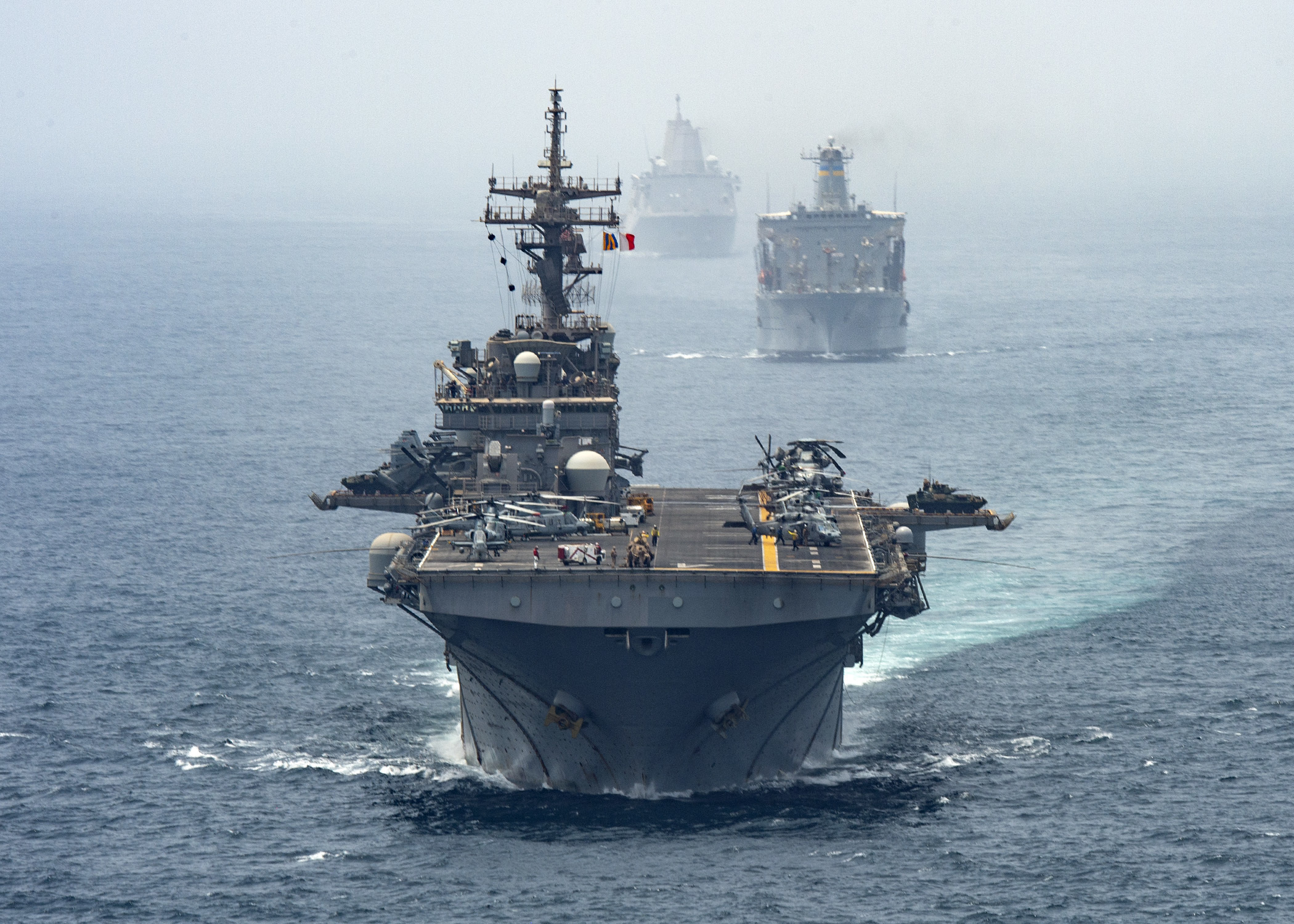
When American administrations develop a deterrence strategy for Iran in the Middle East, a model to follow could be how Israel runs a covert military campaign against Iran in Syria while pursuing public diplomacy with Russia, a new report states.
The way Israel strikes targets in Syria is “not necessarily looking at a forever war” with Iran but rather serves as a means to deter and aggressively defend itself against Tehran and its well-armed proxies, Ilan Goldenberg, a former Pentagon official and one of the authors of the report released by the Center for New American Security, said during a teleconference last week
The report, Countering Iran in the Gray Zone: What the United States Should Learn from Israel’s Operations in Syria, says a strategy like Israel’s “gives [presidents] more freedom of action” than an all-or-nothing approach, Goldenberg said.
For example, Prime Minister Benjamin Netanyahu and his military discovered “the line between deterrence and defense” can be blurred, said Nicholas Heras, a report co-author from the Institute for the Study of War. These “carefully managed” actions are taken to eliminate threats such as Hezbollah employing armed drones to strike Israeli targets from Syria.
In over 200 strikes against more than 1,000 targets, “Israel made obvious to Russia and Syria” that it was aiming “highly-limited and narrowly-focused” attacks against Iranian operations. In the almost nine years of operations, there have been no Israeli casualties. The goal, said Kaleigh Thomas, a CNAS researcher, is to keep those moves from escalating into future conflict with Moscow or Damascus.
Netanyahu personally met with Russian President Vladimir Putin about a dozen times as part of his diplomatic effort to ensure there was no escalation. At the same time, Israel continued a “slow burn” on Iranian targets in Syria. Even when a Russian military jet was accidentally shot down by Syrians, thinking it was an Israeli aircraft, there was no escalation.
Thomas said the diplomacy paid off because Russia didn’t want to get drawn into the middle of a conflict in which it had no vital interests.
The report notes in Syria, Israel retains an intelligence superiority that dates back to 1948. Israel’s military advantage over Syria and Iranian proxies also helps control the action.
In applying this concept to the U.S., Iran understands the huge military advantage the United States retains, he added. Such a middle-way approach will “give us a fair amount of leverage” in choosing a “gray zone” strike. American military and civilian leaders often believe their choices come down to doing nothing or undertaking a major strike, like the targeting of Qasem Soleimani, the leader of the Iranian Revolutionary Guard’s Quds Force.
Explaining why Jerusalem adopted this approach when the Syrian civil war broke out in 2011, Sarit Zehavi, a journalist speaking from Israel and a founder of a security think tank there, said “we don’t have the option to do nothing.”
Israel continues to modify what it does it over time as Iran adopts different tactics, she added. This change in Iranian tactic is most visible in the moves Iran or its proxy militias have made on the Golan Heights, bordering Israel, such as receiving precision-guided weapons and sophisticated missiles, she said.
“We had to develop something in between” to stop these activities and ward off new attempts to threaten Israel from other areas, Zehavi said.
Because Washington’s interests are broader than Israel’s, Goldenberg and others speaking about the report said this approach “can be a component in deterring Iran.” The State Department has accused Iran of interfering in the formation of a new Iraqi government, using Hezbollah to wield political power in Lebanon and run operations against Israel, and employing proxies to launch missile attacks on oil production facilities in Saudi Arabia and other Gulf states.
American political and military leaders need to learn “they must have the willingness to take a calculated risk” in considering a middle way, Goldenberg said. Often they don’t act, he said, “out of fear of triggering all-out war,” as was the case when Iranians were mining tankers in the Strait of Hormuz following the missile attacks on Saudi oil facilities.
There have been some past American successes following the middle way, again in Syria and also in Iraq. The example most commonly used is American special forces working with Kurds and Shiite militias in toppling the Islamic State. “There is a track record of U.S. learning” how to achieve ends without putting 70,000 troops on the ground and enforcing “no-fly zones,” Goldenberg added.
Since America’s interests are broader than one country, U.S. military planners and diplomats need to identify “where are the arenas” to adopt gray zone tactics to achieve limited ends, Thomas and Goldenberg agreed. Considerations include maintaining deniability and letting information “drip out” through social media, news outlets and other parties.
In the case of the targeted attack on Soleimani in Iraq, the Trump Administration continued a “maximum pressure” campaign on Iran, tweeted news of his death and staged a press conference to reinforce the point Washington did not intend to ease up.
But “the loud and public response only embarrassed the Iraqi government,” Goldenberg said. The public pronouncements “made it impossible for Iran not to respond.” Iran did respond with “surprisingly precise” attacks on installations in Iraq where Americans were operating.
For the United States, the best chance for successful gray zone operations is likely in Iraq. “It can be a useful tool; it can’t be a strategy” in limiting Tehran’s influence in predominantly Shiite Iraq, Goldenberg said.





